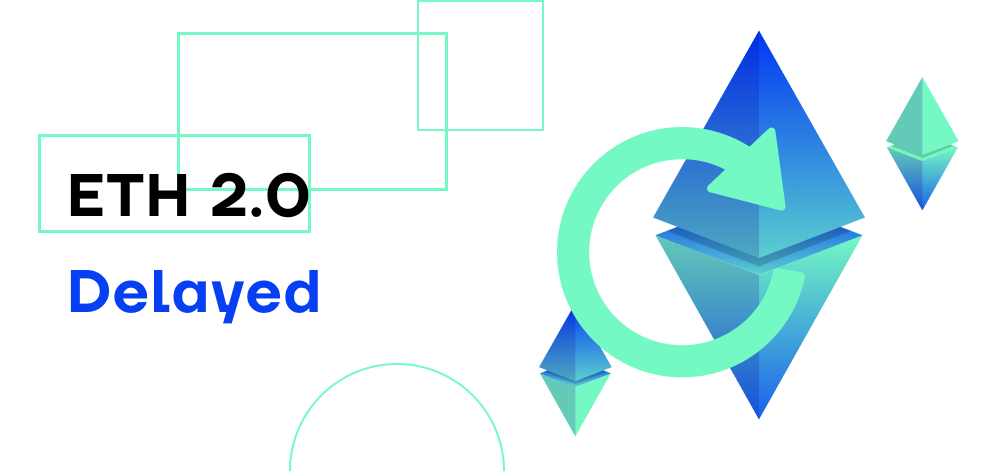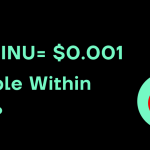ETH 2 delayed 2022: There has been much buzz about Ethereum 2.0, especially when the market requires a push. Many enthusiasts are eager to jump on the Ethereum 2.0 upgrade, which promises to solve some of the most challenging scaling issues the novel chain faces. Without going into many technical details, it is essential to understand the idea behind Ethereum 2.0 and why the need for this upgrade is so critical.
Beyond the purposes of increased security and scaling, less energy consumption appears to be part of the most pressing needs of the Ethereum blockchain. The European Commission, earlier this year, made it clear that crypto mining was a direct challenge to the fulfilment of the Paris Agreement; hence more regulation and taxation are expected. This has increased the pressure to change the consensus mechanism of Ethereum.
However, the technicalities of building open source projects can be challenging. So many parties need to be involved, and decision-making is often slow, which may lead to unnecessary delays. Before we discuss the delay’s nitty-gritty, let’s briefly talk about Ethereum 2.0.
What exactly is Ethereum 2.0?
Ethereum 2.0 refers to an iteration of the current Ethereum blockchain to accommodate fundamental changes. These changes are geared towards fully implementing a Proof of Stake mechanism away from the current Proof of Work consensus mechanism. It is not a fork! It is an upgrade that will be made up of new features and a merger to create an entirely modern blockchain.
Why is ETH 2 delayed ?
While it is clear that Ethereum 2.0 is not entirely a new project, it is good to know that it is a merger between the current layer (layer 1) and the beacon chain. Ethereum 2.0 is currently on delay as a result of the technicalities involved in the project. This is because the project consists of creating a new beacon chain and merging this chain with the old Ethereum chain. After building, it is to be tested and deployed on test networks such as Ropsten to determine the fault resistance of the chain before full deployment and use.
This makes the project a lot more technical than usual. Also, it involves some incentives to promote migration into the new merger and discourage the use of the old chain. Such projects require governance strategies and token economic considerations to ensure that the best safety practices are implemented.
Another reason why we are experiencing this delay is because of the huge security risk associated with deployment. After all, Ethereum 2.0 is not battle-tested yet, and we all know the importance of battle-tested code that can withstand and resist malicious attacks.
Currently, this is still an open-risk project that needs to be contained and all stakeholders involved duly considered before any actions. The stakeholders, in this case, include the potential users of this chain.The goal of Ethereum 2.0 is to work solely on a proof of work mechanism, but for this to happen, there are three phases involved. Each phase has to be properly implemented to avoid any reason for another upgrade, hence part of the reason for the delay. Let’s briefly explain each one of the phases.
- Phase 0
- Phase 1
- Phase 2
Phase 0 – Ground Phase
Phase 0 contains the primary change. It offers a fundamental paradigm for the shift from POW to POS. The initial phase (phase 0) was launched in December 2020 to create the beacon chain. The beacon chain is the chain that will connect all the shards on the network using validators. Shards are smaller units of blocks that are synced together to operate like a block for scaling purposes.
Phase 1
Phase 1 is a more complex project phase, creating shards that will work only on POS mechanisms. This stage involves a substage in which the current layer 1 is merged (The merger we have been waiting for) with the shards created, and Layer 1 itself becomes a shard connected to other shards connected to the beacon chain. However, we are currently sort of stuck in this stage. Right now, the merge is billed to happen in September 2022.
Phase 2
The last stage is the total functioning shards that can hold smart contracts and accounts alike. The idea behind the sharding process is the use of validators and attesters. Within 12 seconds, the beacon chain will randomly select a group of validators believed to be about 1/32 of the total number of stakers. From this same pool of validators, a random block proposer will be picked to do the work of proposing a block, and then the others (attesters) will attest to the validity of this block. Much more complex stuff!

The Ethereum foundation has set the final release date to be sometime in 2023. This means we have quite some time to get to the final stage. The recent delays in the merge can be linked to the Ethereum developers pushing back the Difficulty bomb with the Grey Glacier update. The Difficulty bomb is a system designed to make block processing more exponentially difficult as time passes. It is supposed to be a guardian of ETH supply as far as POW is concerned. As more blocks are hashed and ETH is circulated, the difficulty bomb will serve as some sort of regulator.
Currently, the Ethereum foundation intends to use this difficulty bomb as an incentive to draw miners out of POW to POS. They believe miners will shift to POS by making it more difficult to mine with POW. This Bomb has been pushed back by another 700,000 blocks using the Gray Glacier upgrade, and although many people do not associate this with the merge delay, it has an effect.
The good news is that the merge was simulated on test networks such as Ropsten, and developers ran tests to see the fault tolerance. Upon these results, the developers have agreed to push the implementation of the difficulty bomb to August 2022. This is why we should be expecting major headlines on the merger in September 2022.








